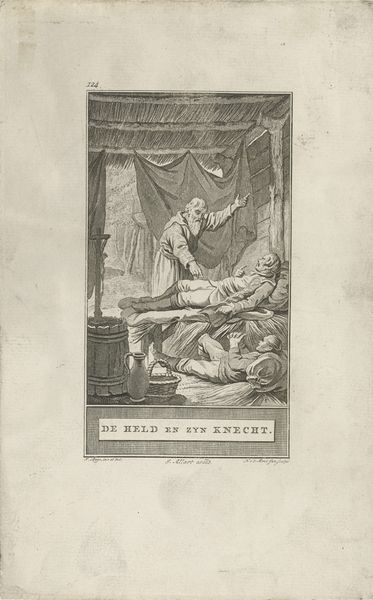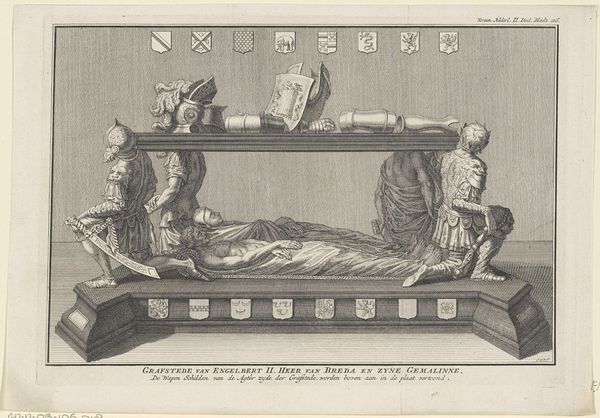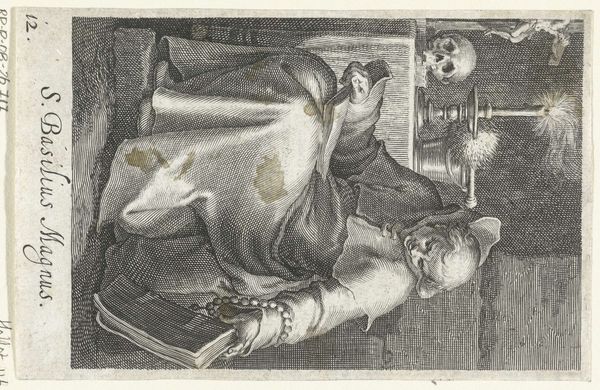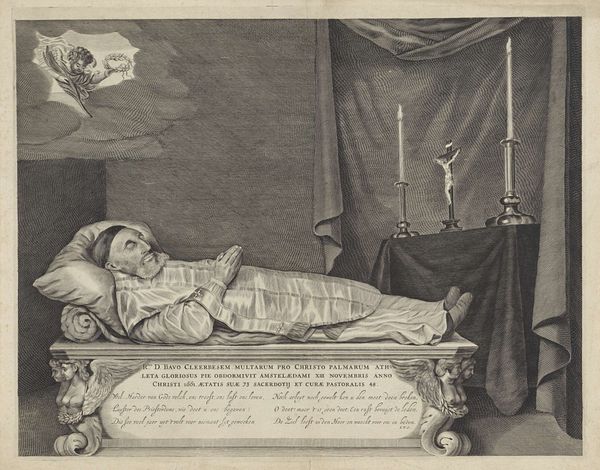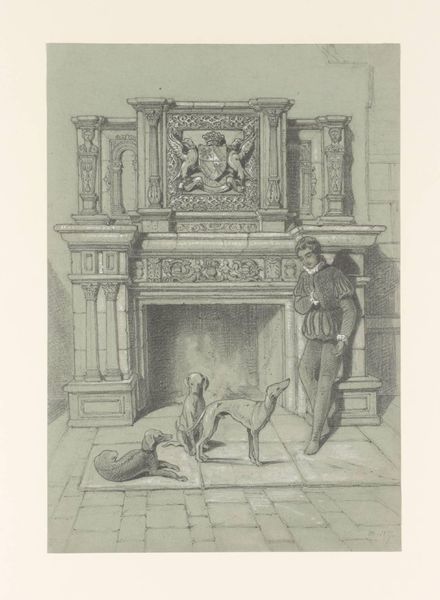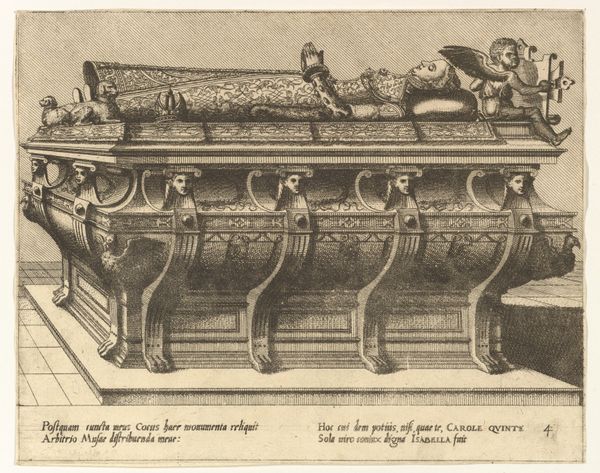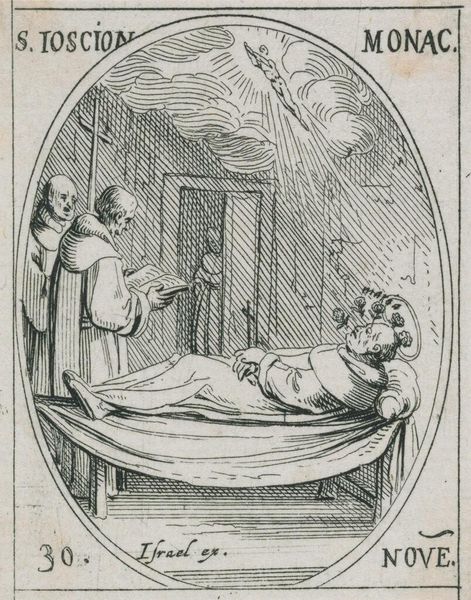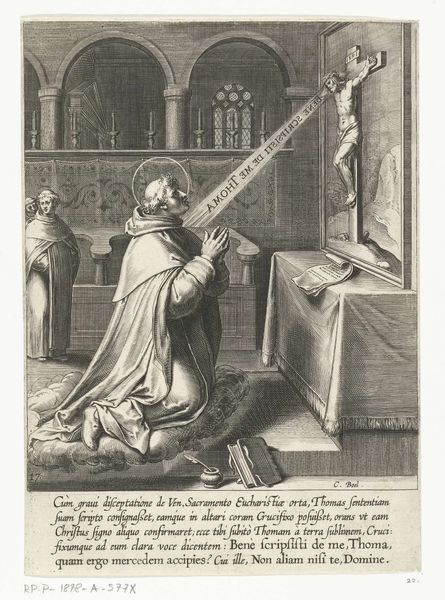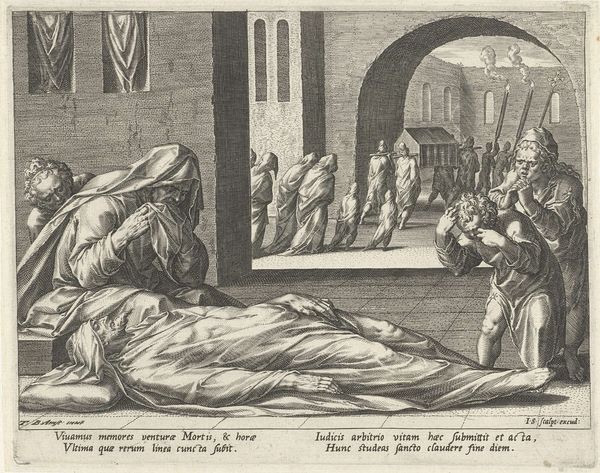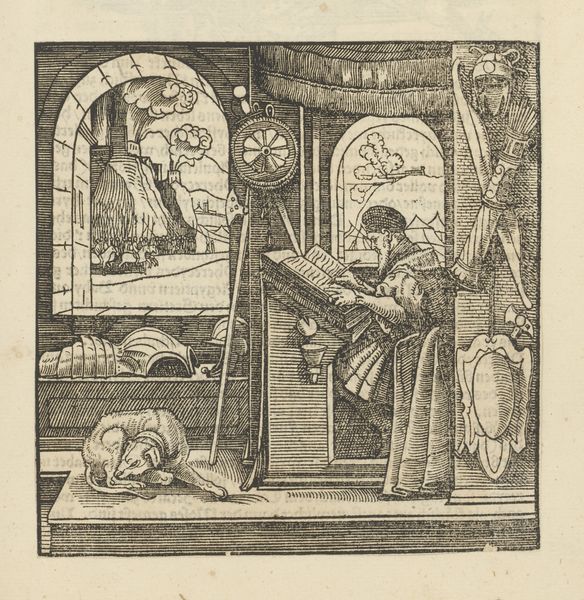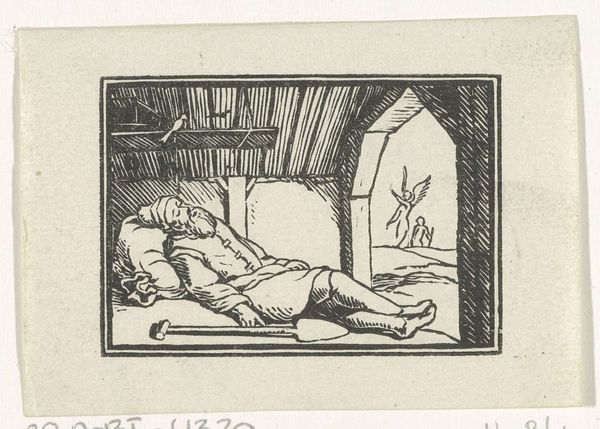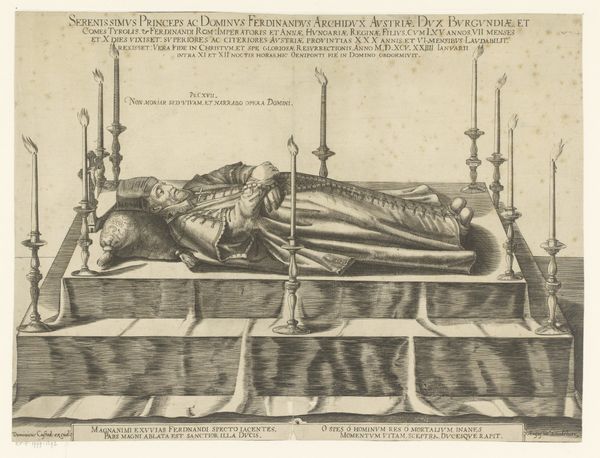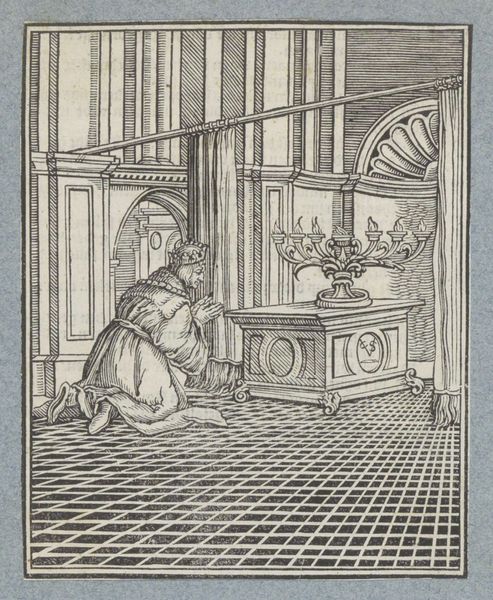
carving, print, engraving
#
portrait
#
medieval
#
carving
# print
#
form
#
line
#
cityscape
#
history-painting
#
engraving
Dimensions: height 305 mm, width 183 mm
Copyright: Rijks Museum: Open Domain
Curator: Wenceslaus Hollar created this engraving titled "Grafmonument van Eduard van Woodstock, prins van Wales" in 1677. It's currently housed here at the Rijksmuseum. Editor: My first impression is one of somber dignity. The incredibly precise lines used to depict the tomb create a powerful sense of weight and permanence, really evoking the solemnity of the subject. Curator: Indeed. The print documents a significant funerary monument and presents Edward, Prince of Wales, within a larger socio-political context. Think about how images of tombs and monuments functioned in the 17th century to reinforce dynastic legitimacy and to project a specific vision of history. Editor: Looking closely, you notice the incredible attention to detail in the ornamentation, both on the effigy of Edward and on the tomb itself. It looks like Hollar utilized complex shading techniques, rendering it all in incredible, intricate detail. Curator: Hollar was working within a specific artistic tradition, one deeply entwined with patronage and political power. He aimed to visually record the likeness and position of this historic personage. Think of the heraldry displayed; all those markers assert claims to power and legacy, visually embedding Edward into the complex web of royal lineage. Editor: And the formal qualities really support that. The composition directs your eye immediately to the central figure, framed as he is by the architectural space and heraldic symbols. Even the figure of the lion beneath his feet serves not just as ornament but provides grounding to the prince, a literal anchor to his earthly reign. Curator: Exactly. Hollar's image provided a durable record for those who had access to it. The image and print, served as a statement about continuity, lineage, and the power of the monarchy, made more available and democratized through printed versions of historical figures. Editor: Considering how faithfully this print seems to recreate the actual texture of stone and the contours of the prince’s armor…It really highlights the inherent skill involved in line engraving. It's astonishing to think that all that detail originates from carefully incised lines. Curator: Looking at this print offers a glimpse into how the past was presented, and really, carefully constructed for audiences centuries ago. It invites questions about what and whom that past served. Editor: For me, examining Hollar's craftsmanship and choices shows how artistry itself lends power to representation and helps make meaning visible.
Comments
No comments
Be the first to comment and join the conversation on the ultimate creative platform.
